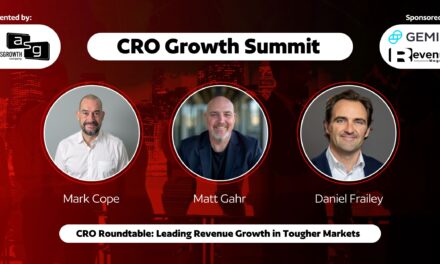
What Investors Want to See from the Revenue Team Before They Invest
Investors who evaluate your business will skip past the product deck. They go straight to the people bringing in revenue: your sales team.
Anyone can show you a chart that goes up and to the right. But investors want to know what’s happening behind those numbers. Is your growth real and repeatable, or did you just have a lucky quarter because your founder is good at closing deals?
During due diligence, they’re looking for the boring stuff. Do you have a system, or are you winging it? Is there a rhythm to how your team operates? Can your sales leader explain why deals close?
The real story is in how you got to that revenue number, not the number itself.
Investors are betting on whether you can keep performing when things get harder. When you add more reps. When you’re managing a bigger team. When the founder can’t be on every sales call anymore.
They want to know if the engine works, or, if it only works because you’re the one driving it.
You Need to Know Your Numbers
Every investor conversation eventually comes down to numbers. Both how much revenue is coming in and what those numbers mean
Investors want to see that you understand the economics of your business. They’ll ask about customer acquisition cost, payback periods, conversion rates, and retention. These metrics tell them whether you’re running a disciplined operation or just going with your gut.
They don’t require you to have every number memorized, but they will expect an understanding of cause and effect: how money turns into pipeline, how pipeline turns into customers, and how long it takes to make back what you spent to acquire them.
Strong revenue leaders can walk through these metrics without hesitation. They know how acquisition costs change across different channels. They can tell you where conversion rates drop in the funnel and why certain customers stick around longer than others. That kind of precision signals you’re in control of your growth.
Vague answers tell a different story. If you can’t explain your financial performance, it means you don’t fully understand your growth, and that makes investors nervous.
Can the Business Work Without You?
Early-stage growth usually depends on the founder. Your network, reputation, and hustle get the first deals through the door.
Investors expect that. What they’re testing is whether the business has started to move beyond it.
If nearly every customer relationship traces back to you, investors see risk. It means you haven’t built a system for generating revenue yet, the growth engine still runs on your personal reach. That can’t scale, and investors know it.
They look for signs that other people own parts of the revenue process. A documented sales process, regular pipeline reviews, a clear onboarding plan for new reps. These show you’re creating something repeatable. If you can bring on new sellers and get them productive within a predictable timeframe, that’s one of the clearest signs you’ve matured past the founder-dependent stage.
Can you step back from closing deals without revenue falling apart? If yes, the business passes, you’re not just selling a product and you’ve built a system that can create and sustain growth without you.
How the Sales Team Runs Day to Day
Once investors confirm that revenue doesn’t depend entirely on the founder, they look at how the sales organization runs. They want to see if there’s an operating rhythm: regular management, inspection, and accountability that keeps growth predictable.
This part of diligence often happens quietly. Investors won’t just take your word for it. They’ll look inside the CRM to see if opportunities are tracked consistently, notes are current, and close dates make sense. They’ll review your forecasting to check whether pipeline meetings happen regularly, whether you have clear criteria for advancing deals, and whether the team understands what qualifies an opportunity to move forward.
A clean, organized system shows the business is managed by process. When investors find old deals sitting at 90% with no recent activity, or incomplete notes on key accounts, it tells them leadership isn’t close enough to the numbers.
The strongest revenue teams leave a visible trail of discipline. Their data aligns with their decisions, and their decisions align with outcomes. That consistency convinces investors the system can hold as the company scales.
Predictability
A strong quarter can impress an investor. A predictable system convinces them.
After reviewing how the sales organization operates, investors shift focus to whether performance can be repeated. They look for stability across time and team: consistent forecast accuracy, reliable conversion ratios, and a balanced mix of new and renewal revenue.
Predictability doesn’t mean every metric rises in a straight line. It means leaders can explain why numbers change. When revenue teams can connect shifts in win rates to specific actions, like new pricing, headcount expansion, or process adjustments, it shows control.
Investors test this by comparing quarters. They’ll ask how forecasts have trended and how outcomes match earlier projections. They review whether the same deals keep slipping, or if sellers close within expected timelines. Patterns matter more than peaks.
Predictable performance earns confidence. It tells investors that when they add capital, they’re fueling a system that knows how to convert it into growth.
Leadership Alignment
The final part of investor scrutiny focuses on alignment.
Investors meet with the CEO, CRO, CFO, and sometimes the head of marketing or product to test how unified their perspectives are. They listen for consistency in how leaders describe the business, its goals, constraints, and path to scale.
When each leader tells a different version of the story, it signals deeper issues. Misalignment at the top usually shows up later in sales execution: inconsistent messaging, shifting priorities, and unpredictable forecasts.
Investors want to hear cohesion. They expect the CRO to connect growth plans to capital efficiency. They expect the CEO to understand what drives win rates. They expect the CFO to reinforce that the model scales profitably. When those pieces fit, it shows that revenue is part of a coordinated system.
For any revenue leader raising capital: investors are backing both performance and alignment. A unified leadership team signals operational maturity and reduces perceived risk, two factors that heavily influence investment decisions.
What It All Adds Up To
When investors evaluate a company, they’re diagnosing the sales system that turns opportunity into revenue.
They’re asking:
- Can this team explain its numbers?
- Can it sustain growth without the founder?
- Does it run on process instead of personality?
- Can results be predicted, quarter after quarter?
- Do the leaders share one version of the truth?
If the answer to those questions is yes, the business shows it’s ready for scale — and capital amplifies what’s working.
For revenue leaders, that’s the goal. Build a system that proves performance isn’t luck. Investors fund confidence, and confidence comes from visibility, structure, and discipline.
































